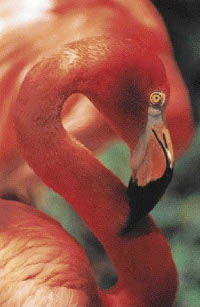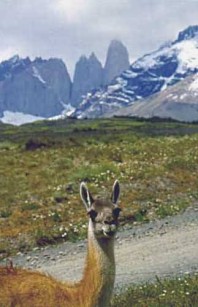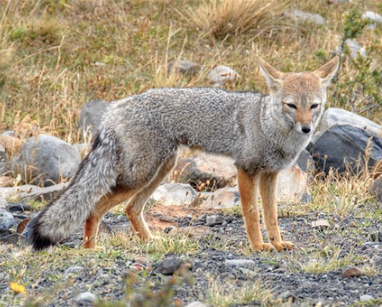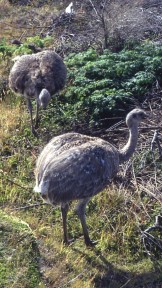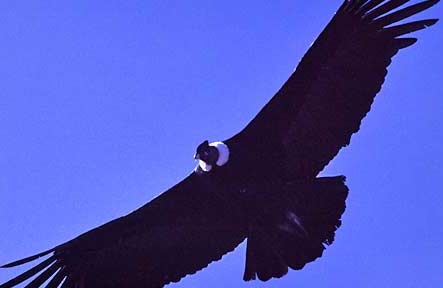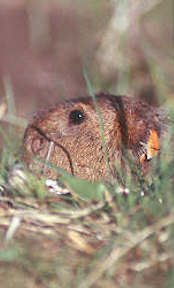|
We left Punta Arenas
and drove deeper into Patagonia. We drove two hours through vast lands,
past inland seas, to a sheep station. Along the way we
saw wildlife and sheep.
The station was a long way from civilization on an inland sea. They used a generator for electricity and
satellite for communication. But it was beautiful there. The family
was British and had owned the land for many years. During the last
upheaval in the government the husband and wife left and went to
Argentina. The husband's father stayed and kept most of the land.
When things settled down the family came back and have since
prospered.
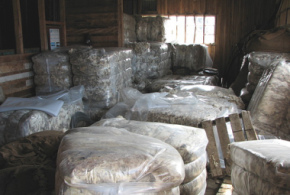
We toured the
sheep shearing shed. The owner told about the operation. |
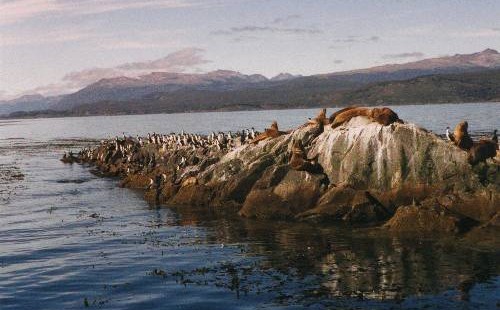
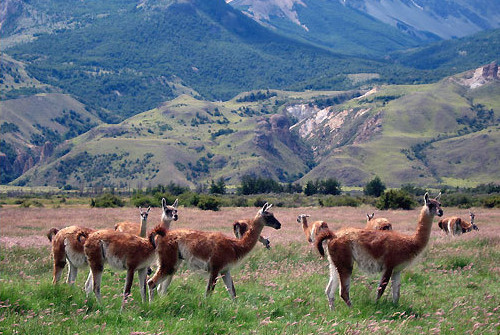
|
|
The
wife's brother was visiting for the summer from Canada and he was a
sculptor who is world famous. He had carved two pieces that were
salmon runs made out of a Patagonian wood. His nephew was a salmon
farmer in Punta Arenas and they were for him. He had also made a
Patagonian Nome that was in the garden. After our tour we went
up by the house for a lamb barbeque in a shed in the back yard.
|
 |
|
The
lamb was spread out on an iron frame and cooked by an open fire.
There was another pit for cooking sausage and heating the bread. We
had lamb, sausage and buns, fresh tomato, avocado, lettuce, and onion
salad, and other dishes and a wonderful berry dessert.
There was a wonderful
vegetable garden surrounded by 7-foot high raspberry and gooseberry
bushes. Jim decided he could live there mainly because of the
garden.
We had to say goodbye
to this lovely family and their farm and be off to Puerto Natales. |
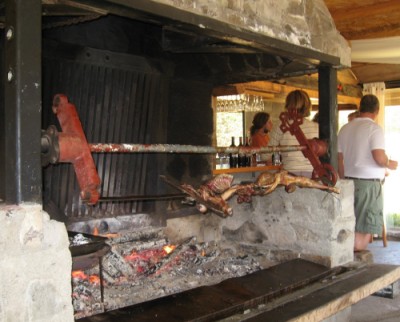 |
 |
It was long drive, but being full most of us were able to catch a few z's on the way.
Arriving in Puerto Natales was amazing as we came around the mountains by another inland sea. The town appeared to be
just a few buildings here and there in the vastness. As we drove
into town it was more crowded, but still a town instead of a city.
|
|
Puerto
Natales is the final port of call for the Navimag ferry sailing from
Puerto Montt into the Senoret Channel as well as the primary transit
point for travelers to Torres del Paine National Park. It is the
capital of both the Ultima Esperanza (Last Hope) Province of Magallanes
and Antartica Chilena Region. It was founded on 1911 as a port for the
sheep industry. Though recently the sheep industry has declined. |
|
Our hotel, Indigo, was
ultra modern Scandinavian and art deco in style. Jim and I had
a hard time trying to figure out how to cover the window.
|
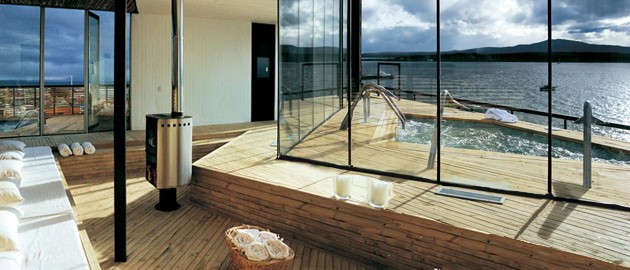 |
|
It was a
big slab of wood on rollers that rolled in front of the window. The
hotel is suppose to be world famous and it sat right across the
street from the sea and a beautiful view of the mountains. |
|
Puerto Natales is the
jumping off city for the Torres del Paine National Park. The town
was full of trekkers and shops that catered to them.
|
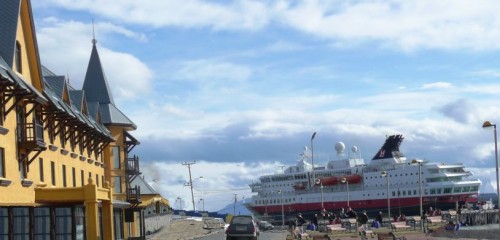 |
Jim and I took
off and went shopping. I bought jewelry and other souvenirs. It was
the first time we really had to shop. We met R.L. and Pat in town
and ate supper at a café with them. The sandwiches were big
and had homemade bread as buns. Yum.
We talked with a young man who
worked at the park and takes people on treks. He was interesting and
had on a National Geographic Expedition hat that was given to him by
the organization for being a guide. |
|
We walked around some
more and ran into Ruth and Jim, did some looking around with them,
and went to a chocolate café for dessert. I got some
chocolate, but Jim and I were too full to eat anything more. Jim and
Jim went back to the hotel and Ruth and I went shopping some more.
Back at the hotel we went to bed since there was no TV. There was a
storm during the night and the wind howled around the building.
|
Day 14
Torres del Paine National Park... |
|
Torres
del Paine National Park comprises mountains, glaciers, lakes and
rivers. The Cordillera del Paine is the centerpiece of the park. It
lies in a transition area between the Magellanic subpolar forests and
the Patagonian Steppes. The landscape of the park is dominated by the
Paine massif, which is an eastern spur of the Andes located on the east
side of the Grey Glacier. Small valleys separate the spectacular
granite spires and mountains of the massif. |
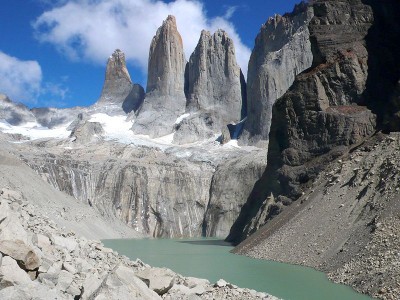 |
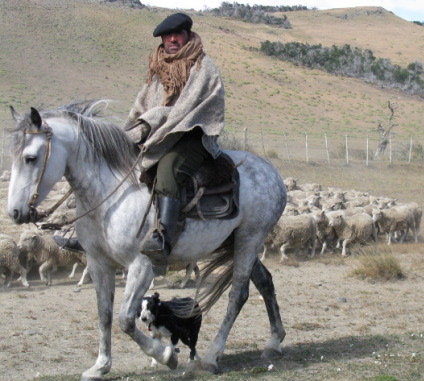 |
We left Puerto Natales
about 11:00 am and drove miles and miles through Patagonia. On the
way we stopped and visited with three men and their sheep dogs
driving a herd of sheep to be dipped. There must have been a
thousand sheep. The wind was blowing and it was cold. One of the
horsemen got off his horse and talked with Rosa while the rest of us
took pictures. Later Rosa said she knew the man's family. We were
very fortunate to see this sheep drive, as it seems typical of a
sheep ranchers' life in remote, windy, dusty, and cold Patagonia. |
|
Not too much further
down the way was the border between Chile and Argentina. Our group
ate lunch and bought souvenirs at a restaurant and store at the
border. We watched other tour buses come into Chile and stop at the
restaurant.
After lunch we started
on our way to the Hosteria Mirador del Payne where we would spend the
next two nights. The road was gravel and somewhat bumpy, but many of
us took naps. |
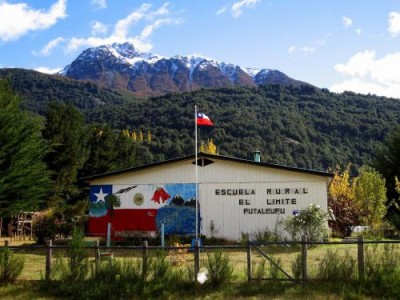 |
|
|
As we turned off the
main road and on to the road to the Hosteria we started up a long
hill and when we topped the hill I saw the "Towers" and said,
"There they are!" We could see the towers of Torres del Paine
and it was breath taking to see them-something I had waited for a
long time. Jim and I were setting in the front of the bus and I
could take pictures as we drove. The mountains were beautiful and so
big. The road was rough and a long way back to the Hosteria, but we
saw all kinds of wildlife along the lake. The mountain views got
better, but the towers disappeared behind them.
|
 |
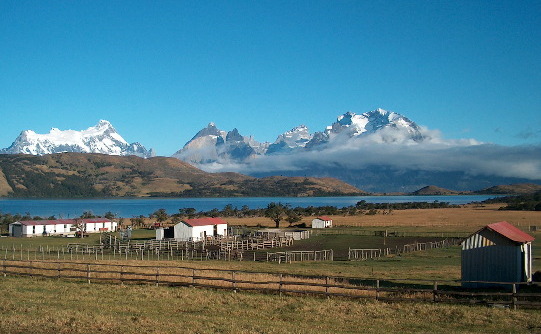 |
|
Hosteria Mirador del
Payne is a working sheep station, but in order to continue to prosper
the owners have turned it into a place for tourists to stay and have
access to the park. One of the trails into the park leaves through
the station. Our room was lovely and had a big picture window that
overlooked the station, the lake and the mountains. The view was a
gift from God.
|
|
Jim and several others
took a walk down by the lake and I took a nap. After I woke up and
Jim was back, we were looking out the window and several sheep
decided to forgo the cattle crossing and get out of their paddock.
We watched them and all but one got back where they were suppose to
be. The little guy stood under our window and bleated for the
others, finally he found his way back. |
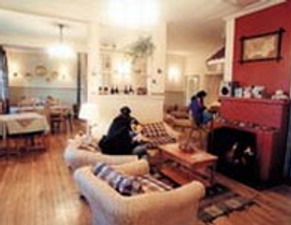 |
Dinner was salad, fish
soup (yuck), steak and a lovely dessert. We had complementary Pisco
Sours, but had to buy wine. Most of us bought water instead.
As it was cloudy, it
got dark early and we left to go to our rooms. The Hosteria
runs on a generator and they turn the lights off at midnight and back
on at 6 am. Jim and I didn't need the lights as we slept well. |
|
It was a cool, misty,
foggy day. Not a day we wanted to visit the most beautiful park in
S. America, but it didn't stop us. The Hosteria packed a sack
lunch for us and off we went to the park. We saw all sorts of
wildlife: flamingos, guanacos, fox, nandus (an ostrich like bird),
birds and other animals. |
|
We drove to a waterfall that connected two
lakes. We had to walk to the falls and took lots of pictures as we
climbed over hills and rocks to get the best view. Even though we
could not see the tops of the mountains because of the fog, I felt
small in comparison to them and the waterfall. Everything seemed on
a grand scale and gave me the feeling that I was so small in
comparison to my surroundings. |
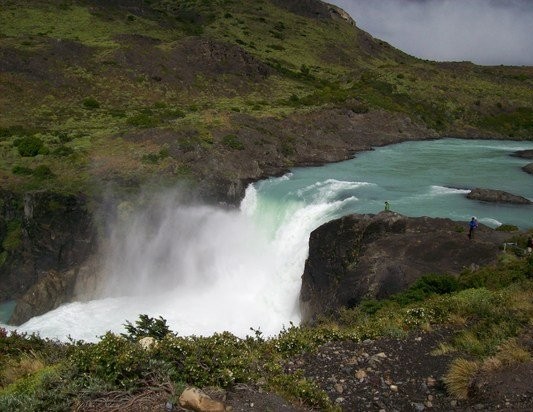 |
|
When we walked back to
the bus, we ate lunch on the bus because it was drizzling outside.
Our lunch consisted of two huge sandwiches on homemade bread, fruit,
granola bar, candy, cookies and water. It was much more than we
needed. |
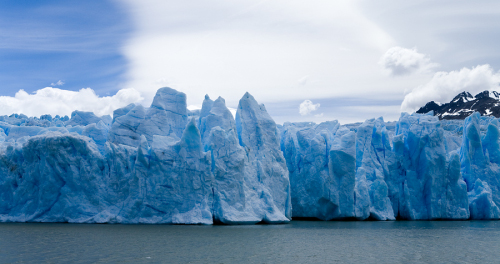 |
Next we drove to Grey
Glacier. In order to see the glacier we had to cross a wild river on
a swinging bridge and walk about ½ mile to a causeway and then
¼ mile on the gravel and rock causeway to see the glacier. It
was cold, windy and drizzly and very hard to walk on the rocks. |
|
Jim
and some others walked all the way out and got good pictures of the
glacier, but I only walked half way and saw only a fraction of the
glacier. There were chunks of the glacier closer by that had calved
off and they were a beautiful icy blue. A boat was available for a
trip to the glacier but it wasn't on our tour and we didn't get
to go up close.
After the glacier it
was late enough that we had to get back to the Hosteria. Rosa
decided we would take a new road so we could see different
scenery. |
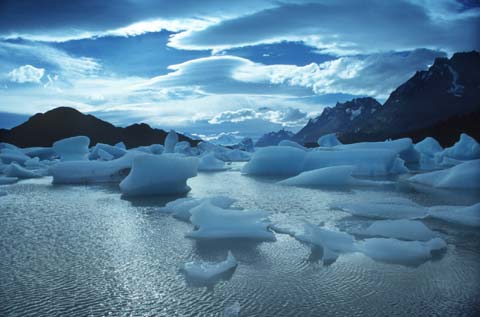 |
|
New road, Ha!
It was the roughest road so far. It
followed Lago Torres, and went through deep cuts in the rocks, but it
was by far the roughest road we had been on. |
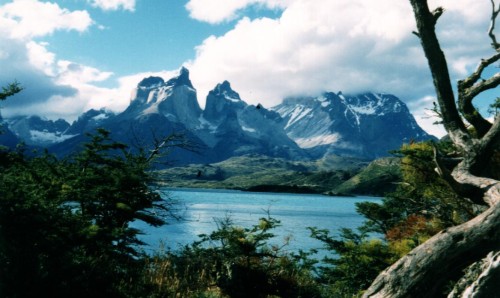 |
All of us were shook up
and glad to get back to the road to the Hosteria. Our bus driver
drove pretty fast and made the ride even rougher.
We didn't get to see
as much of the park as I would have liked to and it was cloudy and
misty all day, but it was still a good day and we enjoyed the beauty
anyway.
That night for dinner
we had a good time, as it would be our last night to feast together.
We had salad, beef soup, salmon, and a good dessert. |
|
After we had
eaten and were stuffed, they bought us a beautiful torta for Jim's
and my anniversary, which was the next day. I don't know how they
expected us to eat it. I ask them to save it and serve it for
breakfast the next day.
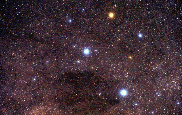 |
I had hoped to see the
Southern Cross that night, but it was cloudy. That had been another
reason for me to go south of the equator. There will be a next time. |
|
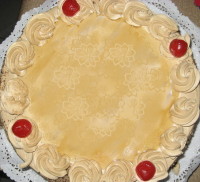 |
Day 15
Punta Arenas, Santiago, Atlanta, Kansas City... |
|
The morning of our
anniversary was just beautiful; the sun was shinning, and the view of
the mountains and lake were so majestic I could hardly breathe.
Unfortunately, we were leaving to come home. The group enjoyed
breakfast and our anniversary torta. We left the beauty of the
Hosteria about 9:00 am for the long trip home.
|
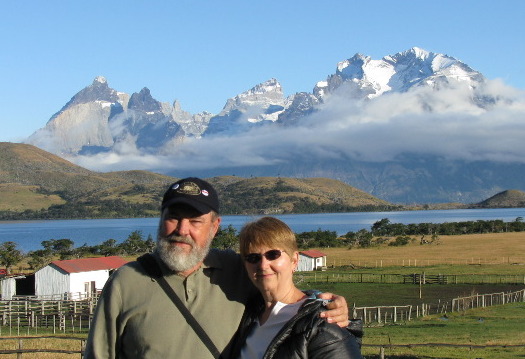 |
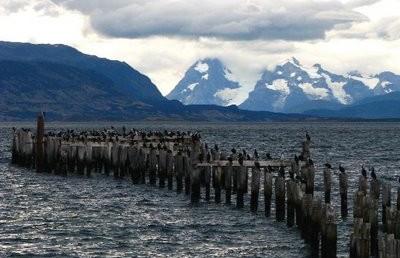 |
We drove about 2 hours
to Puerto Natales and had one last fabulous lunch... a 3 wine glass
lunch and our last Pisco Sour. The restaurant was up high above the
building and we could see the inland sea and the mountains. It was
Valentine's Day and each of the ladies got a red rose. Most of us
left the rose with Rosa as we knew that we couldn't bring it back
in the U.S.
After lunch we had a
3½-hour drive back to Punta Arenas to catch our plane. It was
a long drive and most of us slept. |
|
We said our good byes
to Rosa and Alberto, the bus driver, made it through the check in and
up to the gate without any problems. Chile's airline rules are
much more lax than in the U.S.
|
|
The plane was delayed because a woman
was seriously injured and needed to be flown to a Santiago hospital.
The airline took seats out in the back to make room for her gurney
and an accompanying nurse. Jeff was getting worried and afraid that
we wouldn't get to Santiago in time to catch our international
flight. That would have meant the travel company would have to put
us up in a hotel another night, because of only one flight to Atlanta
per day.
It was a three and
half hour flight to Santiago and Jeff had the airline call ahead and
hold the plane for us. We had to get our luggage, tickets, and go
through customs, but we all made it. Nine and a half hours later we
were in Atlanta. Customs in Atlanta took about an hour and a half,
but there were no problems. |
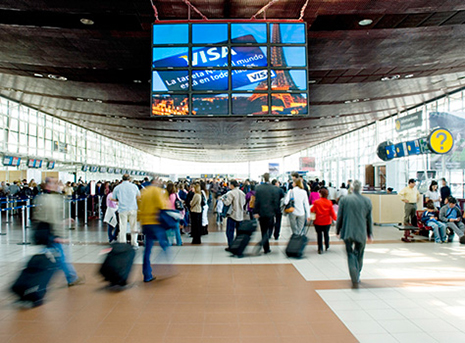 |
|
We had a 3hour layover
in Atlanta and an hour and half flight to KC. We stopped for lunch
and got home about 3:00 pm. |
|
It would have been
easier traveling had we not had to leave from Torres del Paine, but
Punta Arenas. The last day of travel was too long.
|
|
EPILOGUE:
This was definitely
the trip of a lifetime. Chile is a wonderful country to visit. The
people are so friendly and enjoyed having us visit. Our tour guides,
Jeff Stanislawski, Terry Regan and RosaMaria were wonderful and made
our trip even more enjoyable. |
 |
Jeff is from WWW Country Tours and
took care of all the worry in making sure we had a good time and made
it back home. |
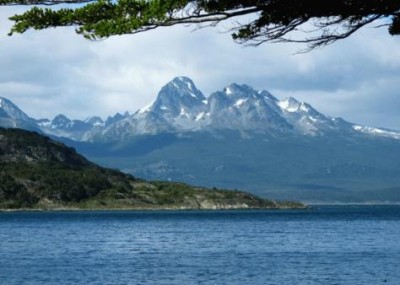 Ensenada Bay, Tierra Del Fuego Ensenada Bay, Tierra Del Fuego |
Terry is American, but lives in Chile and knows who to talk to, where to go and what to eat.
|
Her home is on Easter Island
when she is not taking agricultural groups on tour. |
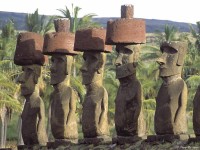 |
Rosa, a young friend of Terry's from Tierro del Fuego who knows a lot about Patagonia, is just starting to guide tours.
|
|
All of the people on
the trip were friendly and we all got along well. Jim and I made
some good friends that we may find ourselves traveling with again in
the future. |
|
I want to go back to
Chile, especially to cruise around the islands at the tip, to see the
fjords, to see penguins, and the Southern Cross. Someday I will.
Mary Wood, 2008 |
 |












